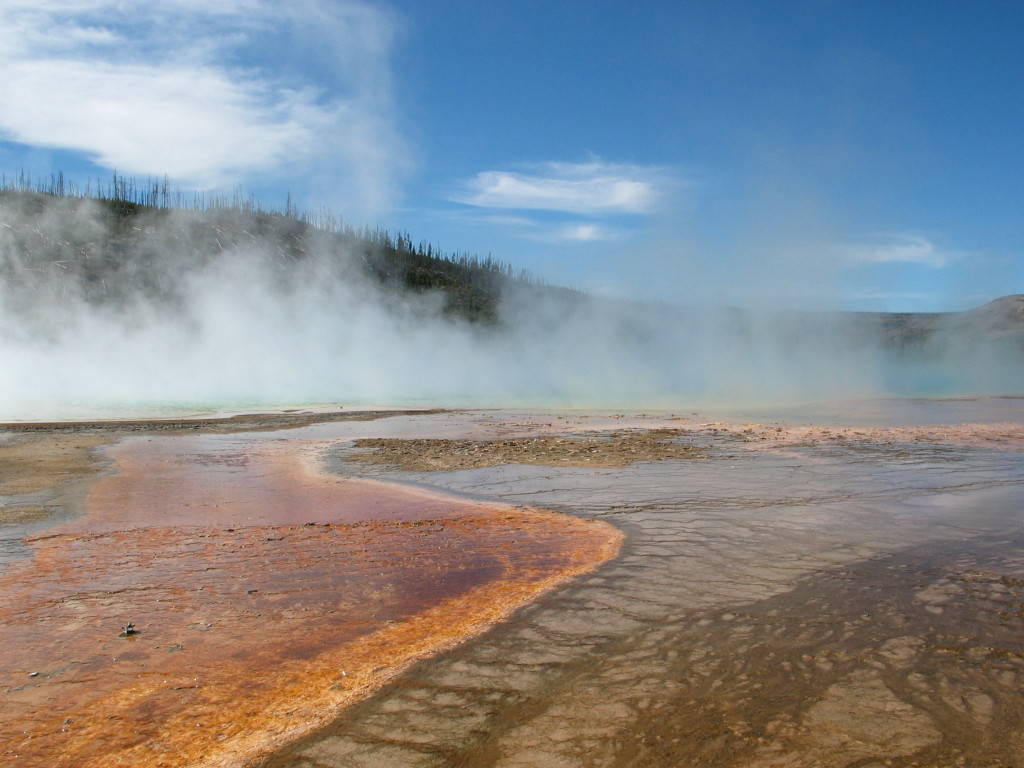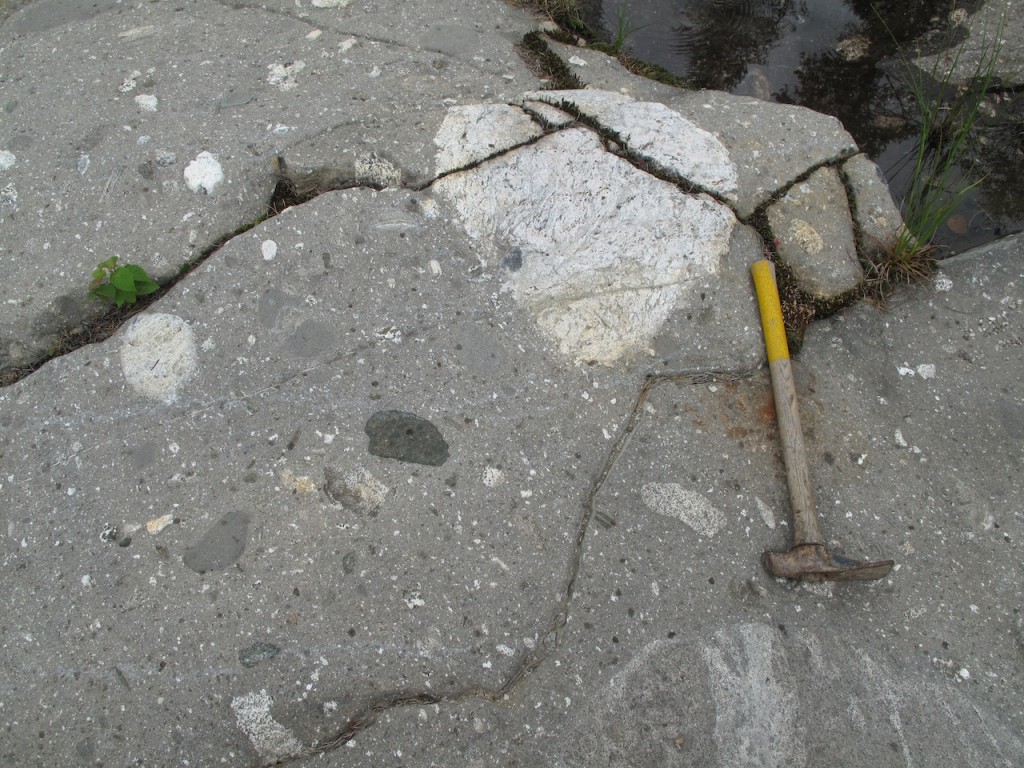Research 🔬
My research interests are diverse and interdisciplinary in nature and I have an active research program. Throughout my research I synthesize of field and remote sensing observations with a range of geochemical data. I place a strong emphasis on fieldwork and this forms the basis for much of my research. Indeed, I approach planetary geology with the fundamental view that interpretations of other planetary bodies must begin by using the Earth as a reference.
Research Focuses
The overarching focus for my research is on understanding the origin and evolution of the terrestrial (or rocky) planets of the inner Solar System and the Earth’s moon, through the study of planetary surface processes and planetary materials (e.g., meteorites and Apollo samples). A major thrust of my research on planetary surface processes is on impact cratering, in other words the study of meteorite impact structures and the processes, products, and effects of their formation. I am also actively working on various topics of glacial and periglacial geomorphology, involving fieldwork in the Canadian Arctic and comparative studies looking at the northern plains of Mars where such processes have been proposed to have taken place.
My research on impact craters extends to investigating the role of impact cratering in the origin of life on Earth and the potential for life on Mars, bringing my research into the field of astrobiology. This interest in meteorite impact craters also involves research on economic geology, focused on the Sudbury impact structure, Ontario, a ~250 km diameter impact crater and the site of North America’s largest mining camp.
A further area of research is on the Precambrian geology of the Canadian Arctic and Northwest Scotland. This represents some of the most recent and earliest research that I have been involved in – my first ever journal publication in 2001 was on the results of my undergraduate honours thesis, where I mapped an area of South Uist in the Outer Hebrides of Scotland.
In addition to these scientific research objectives, I am also active in developing technologies and techniques for exploration, whether that be remote or extreme locations on Earth (e.g., High Arctic, deep underground mines) or human and robotic surface operations on the Moon and Mars. In essence, this part of my research addresses fundamental questions about how we explore and the techniques and technologies required to enable this exploration – both on Earth and other planetary bodies. The two major areas of research are on instrument development and autonomous science.
My research on meteorite impact craters has resulted in a strong interest in the origin and evolution of life on Earth and the possibility of finding life on Mars. This may sound surprising and indeed, the destructive geological, environmental, and biological effects of meteorite impact events are well known. This is largely due to the discovery of the ~200 km diameter Chicxulub impact structure, Mexico, and its link to the mass extinction event that marks the end of the Cretaceous Period 65 Myr. ago.
However, more recently it has also become apparent that, once formed, impact events also have certain beneficial effects, particularly for microbial life. The effects range from generating conditions conducive for the origin of life (e.g., clays) to varied habitats for life that persist long after an impact event, including hydrothermal systems, endolithic habitats in shocked rocks and impact glasses, and impact crater lakes. This may have important implications for our understanding of the origin and evolution of early life on Earth, and possibly other planets such as Mars. This research is summarized in a recent review paper entitled “The role of meteorite impacts in the origin of life“.
In addition to the astrobiology of impact craters, my research in the Canadian Arctic has also resulted in an into cold springs as habitats for life – which has direct relevance to Mars. This work has focused on Axel Heiberg Island in Nunavut, where cold springs flow year round despite flowing through over 500 m of permafrost. Another site is the so-called Golden Deposit in NWT, where a cold spring precipitates the mineral jarosite, which is common on Mars.
precipitates the mineral jarosite, which is common on Mars.

One of the less well known aspects of impact events is the production of economic mineral and hydrocarbon deposits. Indeed, it is estimated that approximately 25% of all impact craters on Earth contain economic resources of one form or another. Resource deposits at impact structures in to 3 main categories: progenetic, syngenetic, epigenetic. Progenetic deposits are those that formed prior to the impact event by endogenic mechanisms. The subsequent impact event then caused spatial redistribution of these deposits, typically bringing them closer to the surface, where they then become economically viable. Syngenetic deposits are those that form as a direct consequence of the impact event and form either during or immediately post-impact. Ores generated through differentiation of impact melt – common at Sudbury – are a prime example. Hydrothermal systems following an impact event, also form as a direct result of the impact process and are also considered syngenetic. Epigenetic deposits are those that take advantage of the formation of an enclosed topographic basin and/or unique structural aspects of impact structures, such as faults and fractures (e.g., oil shales and oil and gas accumulations).
My economic geology interests are focused on understanding ore deposits at the ~200 km diameter impact structure ~1.85 Ga Sudbury impact structure, Ontario. The Ni–Cu ores of the Sudbury region were first discovered in 1883. Since then, Sudbury has grown to be the richest mining district in North America. A common classification for the Cu-Ni-PGE deposits at Sudbury is: 1) SIC–footwall contact deposits; 2) footwall vein deposits; 3) offset dyke deposits; and 4) sheared deposits.
Despite the proven and potential economic benefits of resource development at Sudbury, there are still major outstanding questions concerning our understanding of the structure and its ore deposits. The overarching goal of Dr. Osinski’s research is to further the understanding of large-scale impact-related processes and structures that control mineralization in the more non-traditional Cu-Ni-PGE ore deposits distal to the Sudbury Igneous Complex (SIC)-footwall contact at the Sudbury impact structure, Ontario. In partnership with Wallbridge Mining Company Limited, he is working on a series of research questions concerning the origin of Sudbury Breccia, host to footwall vein deposits, and Offset Dykes at Sudbury and their mineralization.

The overarching long-term goal of my research is to investigate and to quantify the potential effects of meteorite impact events on the Earth, Moon and Mars. My research is built around four hypotheses, which is that impact events: (a) can negatively affect pre-existing life; (b) produce substrates suitable for prebiotic chemistry; (c) generate new, unique habitats for life; and (d) generate mineral and hydrocarbon deposits of economic potential.
In order to address these hypotheses, my research focuses on understanding four key processes involved in the formation of meteorite impact structures:
(1) Shock melting and metamorphism
In a series of articles beginning with my PhD work, my research has shown that carbonates and evaporites undergo melting during impact events. Prior to this, it was widely accepted that sedimentary rocks do not melt; rather it was thought that such lithologies decompose, releasing harmful gases such as CO2 and SO2. This has fundamental implications for understanding the destructive environmental effects of impact events, such as the Chicxulub impact 66 million years ago and its possible link to the K-Pg mass extinction. My approach has been to conduct detailed fieldwork followed up with detailed microanalytical studies of samples from impact craters in Canada and around the world. This has provided a framework for others to follow in recognizing evidence for the shock melting of carbonates during impact.
(2) Impact ejecta emplacement
The generation of ejecta deposits is one of the most characteristic, but poorly understood, aspects of the impact cratering process. Building on my earlier work done during my PhD, in 2011 I published a paper that proposed a new multi-stage model for impact ejecta emplacement on the terrestrial planets. A 2018 paper builds upon this work through the study of ejecta deposits at Mistastin Lake impact structure. At Barringer Crater, in addition to detailing carbonate melts (see above), we documented the first occurrence of impact melt and projectile-bearing ejecta. Because so few craters on Earth preserve ejecta deposits, investigation of this topic requires studies of craters on other planetary bodies. Both Mars and the Moon have been the focus for the past 5 years with significant progress in understanding impact ejecta emplacement having been made.
(3) Impact crater collapse
The formation of an impact crater can be divided into three main stages (1) contact and compression, (2) excavation, and (3) modification. My research seeks to better understand how complex craters form through a combination of field studies of craters on Earth and remote sensing studies of craters on the Moon and Mars. One of my early contributions in this area was the detailed mapping of the Haughton impact structure, which provided important insights into how mid-size complex impact craters form. In more recent and ongoing work, I am part of a large international team studying the Chicxulub impact crater and insights into peak-ring formation.
(4) Impact-generated hydrothermal alteration
A big focus for my research is on the growing recognition that impact events are not just agents of destruction but that they also have certain beneficial effects, particularly the generation of hydrothermal systems within an impact crater immediately following its formation. Through detailed mineralogical and geochemical studies of alteration phases at the Haughton, Ries and other impact structures, my research has led to the development of a conceptual model for the origin and evolution of hydrothermal activity within impact craters and how these systems could have acted as potential habitats for life on Early Earth and potentially other planets, such as Mars (see paper here).
Key to all of my research is studying the products of meteorite impact events and investigating the influence that target lithology has on the various aspects of the impact cratering process.
To be added…
To be added…
To be added…
To be added…